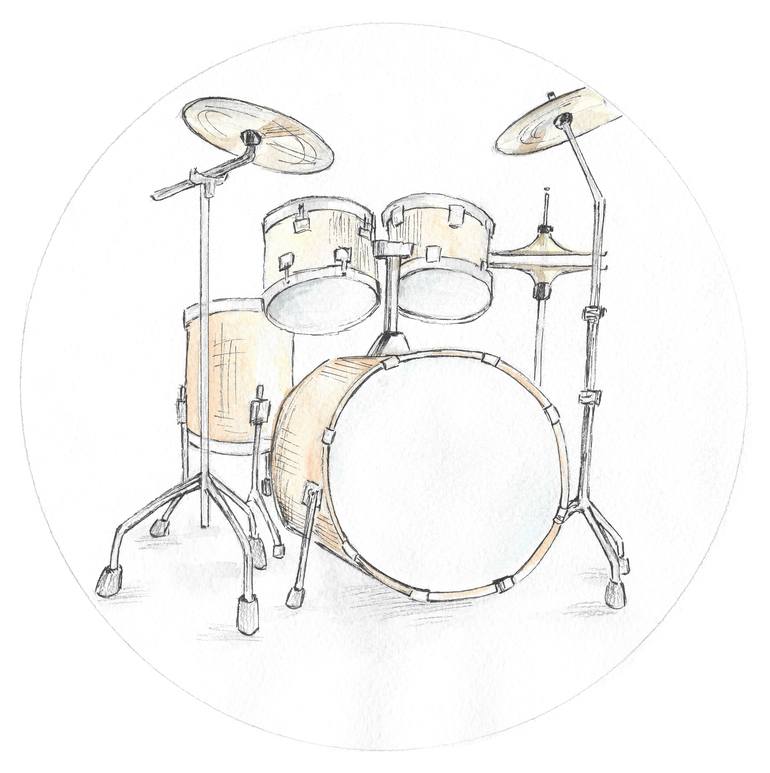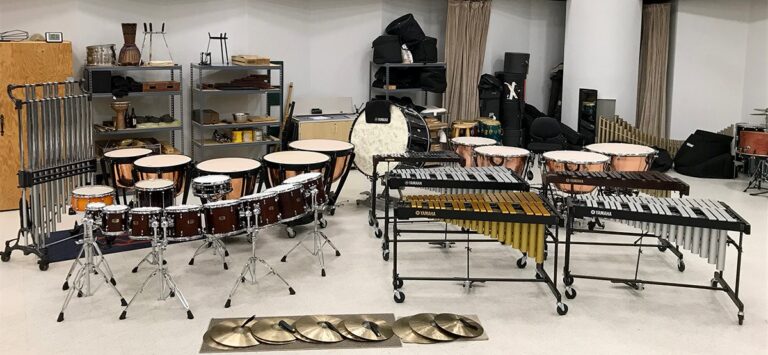Drummers hold the heartbeat of every band, setting the rhythm that drives each song forward. For musicians and music enthusiasts, understanding the different types of drums in a drum set is essential for appreciating or creating the perfect sound. This blog post dives deep into the fascinating world of drum sets, from their historical evolution to the unique components that make up these percussion instruments.
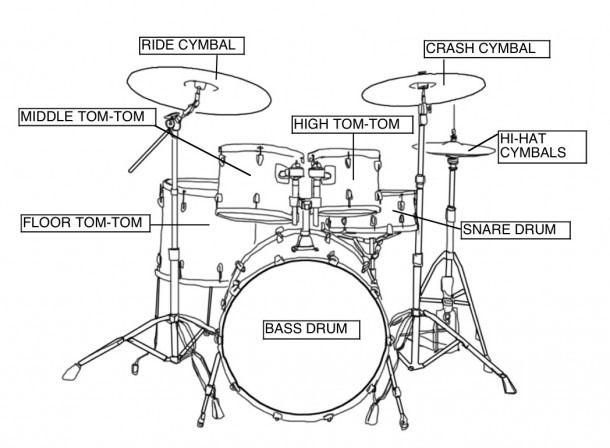
The Evolution of the Drum Set
Drums have been around for millennia, with ancient civilizations using various forms of drums for communication, rituals, and entertainment. The modern drum set, however, has its roots in the early 20th century when jazz music began to flourish. Drummers needed a versatile setup that allowed them to play multiple percussion instruments simultaneously. Hence, the drum set was born, evolving from simple bass drums and snare drums to the complex arrangements we see today.
Over time, the drum set has become an integral part of many music genres, from rock and pop to jazz and blues. This evolution has brought about innovations in drum construction and design, catering to the diverse needs of drummers worldwide.
Understanding the Anatomy of a Drum Set
A drum set is more than just a collection of random percussion instruments. Each component plays a specific role in creating the overall sound. Here’s a breakdown of the main parts:
- Bass Drum: Also known as the kick drum, this is the largest drum in the set, providing the deep, thumping beats that form the foundation of the rhythm.
- Snare Drum: Positioned between the drummer’s legs, the snare drum produces sharp, staccato sounds that are crucial for keeping the beat.
- Tom Toms: These drums come in various sizes and are mounted on the bass drum or on stands. They add melodic elements to the rhythm.
- Cymbals: Including the crash cymbal, ride cymbal, and hi-hats, cymbals contribute a range of sounds from sharp crashes to sustained, shimmering tones.
The Bass Drum

The bass drum is the heart of the drum set. Its large size and deep sound make it the foundation of the rhythm section. Drummers play the bass drum using a foot pedal, which allows them to control the timing and intensity of each beat.
Choosing the right bass drum depends on your musical style. For instance, jazz drummers may prefer smaller bass drums for a tighter sound, while rock drummers often go for larger drums to produce a powerful thump.
The Snare Drum
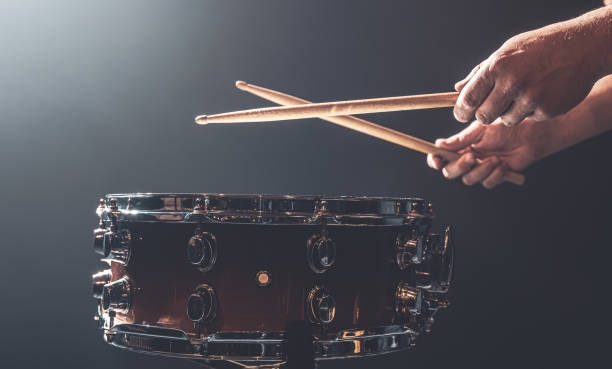
The snare drum is the centerpiece of the drum set, providing the crisp and cutting sounds that drive the rhythm. It features a series of metal wires (known as snares) stretched across the bottom head, which vibrate when the drum is struck, creating its distinctive sound.
Snare drums come in various materials, including wood and metal, each offering different tonal qualities. Wood snares provide a warm, mellow sound, while metal snares deliver a brighter, sharper tone.
Tom Toms

Tom toms, or simply toms, add melodic elements to the drum set. They come in three main types:
- High Tom: The smallest tom, usually mounted on the bass drum, producing a higher pitch.
- Mid Tom: Slightly larger than the high tom, offering a balanced tone.
- Floor Tom: The largest tom, typically placed on the floor, providing deep, resonant sounds.
Drummers use toms to create fills and add complexity to their rhythms. The combination of different toms allows for a wide range of tonal possibilities.
The Crash Cymbal
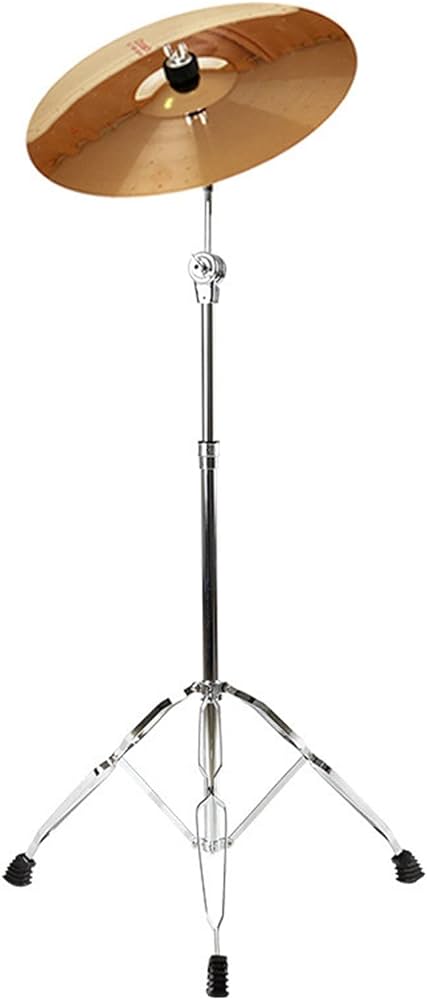
The crash cymbal is used to accentuate moments in the music with a loud, explosive sound. It’s typically struck with a drumstick at the edge to produce a crashing effect.
Crash cymbals come in various sizes and thicknesses, affecting their sound and sustain. Larger, thicker crash cymbals produce a louder, longer-lasting sound, while smaller, thinner cymbals offer quicker, more subtle accents.
The Ride Cymbal

The ride cymbal is a staple of the drum set, providing a steady rhythmic pattern akin to a metronome. Drummers often use it for playing consistent patterns that drive the music forward.
Ride cymbals are generally larger and heavier than crash cymbals, producing a sustained, shimmering sound. They can also be played on the bell (the raised center) for a distinct, pinging tone.
The Hi-Hats
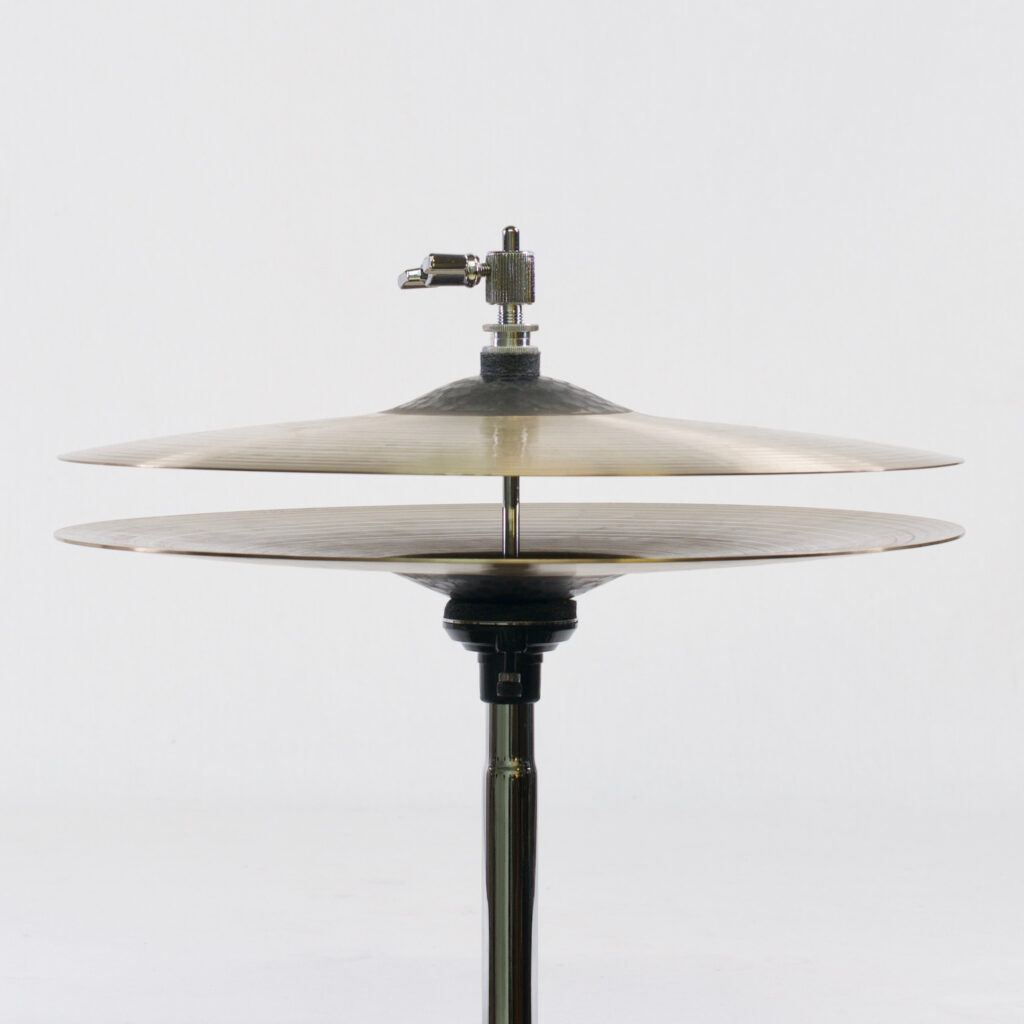
Hi-hats are a pair of cymbals mounted on a stand, operated by a foot pedal. Drummers can play them open or closed, creating a range of sounds from tight, precise clicks to loose, washy tones.
Hi-hats are crucial for keeping time and adding texture to the rhythm. They’re versatile and can be used in various ways, making them an essential part of any drum set.
Choosing the Right Drum Set for Your Style
Selecting the right drum set depends on your musical preferences and playing style. Here are some tips to help you choose:
- Genre: Different genres require different sounds. Jazz drummers may prefer smaller, more resonant drums, while rock drummers often opt for larger, more powerful drums.
- Material: The material of the drums and cymbals affects their sound. Wood drums offer warm tones, while metal drums provide brighter sounds.
- Customization: Many drummers customize their sets with additional percussion instruments or unique drum finishes to match their style.
Setting Up Your Drum Set
Properly setting up your drum set is crucial for optimal performance. Here are some steps to follow:
- Positioning: Arrange your drums and cymbals in a comfortable and ergonomic layout. Ensure everything is within easy reach.
- Height and Angle: Adjust the height and angle of each drum and cymbal to suit your playing style. This helps prevent strain and allows for more efficient playing.
- Tuning: Tune your drums to achieve the best sound quality. Experiment with different tensions on the drum heads to find your preferred tone.
Tuning Your Drums for the Best Sound
Tuning is an essential aspect of drum maintenance. Here’s how to tune your drums:
- Drum Head Tension: Adjust the tension of the drum heads to find the desired pitch. Higher tension produces higher pitches, while lower tension results in deeper sounds.
- Even Tension: Ensure the tension is even across all lugs (the screws around the drum head). This prevents unwanted overtones and ensures a clear, focused sound.
- Fine-Tuning: Make small adjustments to fine-tune the pitch and tone. Trust your ears and experiment until you achieve the perfect sound.
The Importance of the Drum Throne
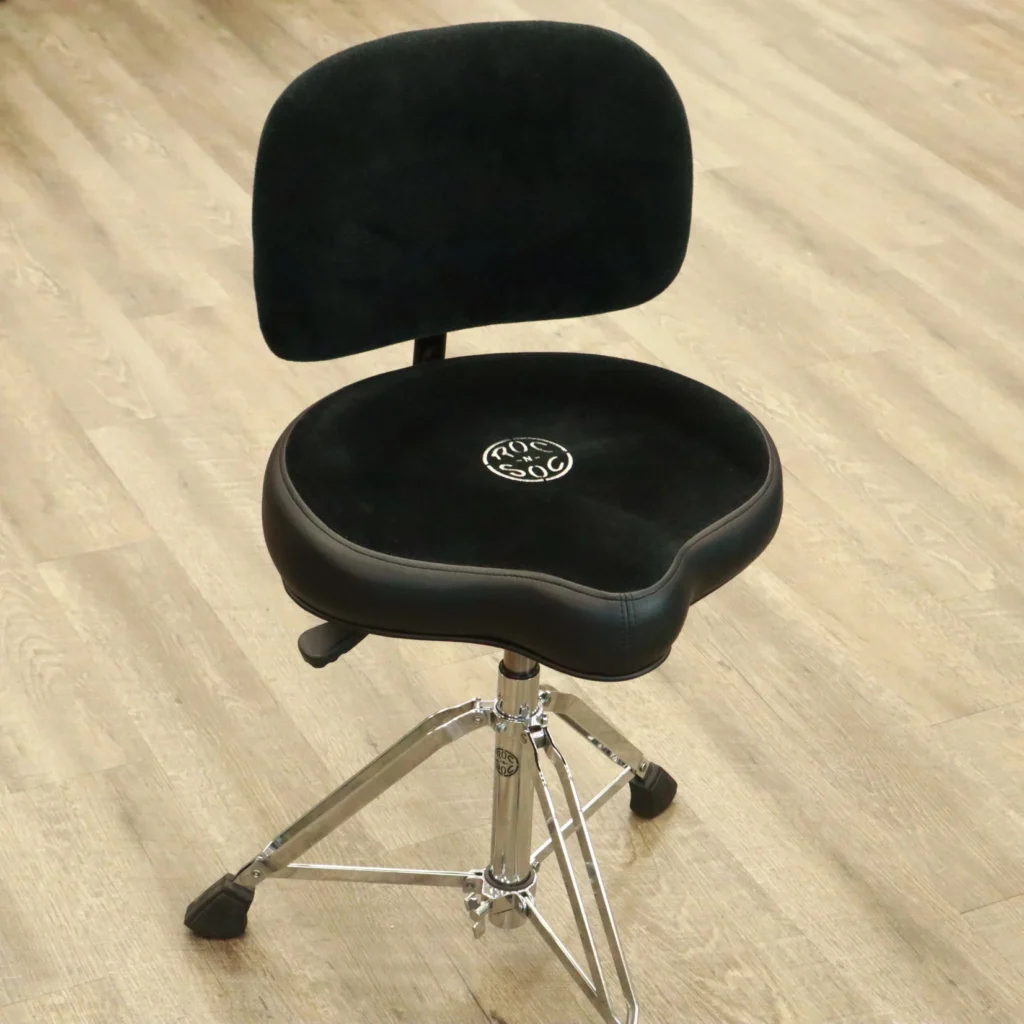
The drum throne, or stool, is often overlooked but plays a critical role in a drummer’s setup. A comfortable, adjustable throne provides the necessary support for long practice sessions and performances.
When choosing a drum throne, consider factors like height adjustment, padding, and stability. A good throne helps maintain proper posture, reducing the risk of back pain and enhancing your overall playing experience.
Engaging with the Drum Community
One of the joys of being a drummer is connecting with other musicians. Joining a drum community allows you to share tips, learn new techniques, and find inspiration. Whether through online forums, social media groups, or local meetups, engaging with fellow drummers can enhance your skills and passion for drumming.
Many drum communities offer resources like tutorials, gear reviews, and performance videos. Participating in these communities can broaden your knowledge and keep you motivated on your drumming journey.
Conclusion
Understanding the different drums in a drum set not only enhances your appreciation for this versatile instrument but also helps you make informed decisions when building or upgrading your own set. From the foundational bass drum to the melodic toms and expressive cymbals, each component plays a vital role in creating the unique sound of your drum set.
Ready to take your drumming to the next level? Share your thoughts and experiences in the comments below, and join our community of passionate drummers. Whether you’re a seasoned pro or just starting, there’s always something new to discover in the world of drumming.

